- 24,333

- It/It
- GTP_TheCracker
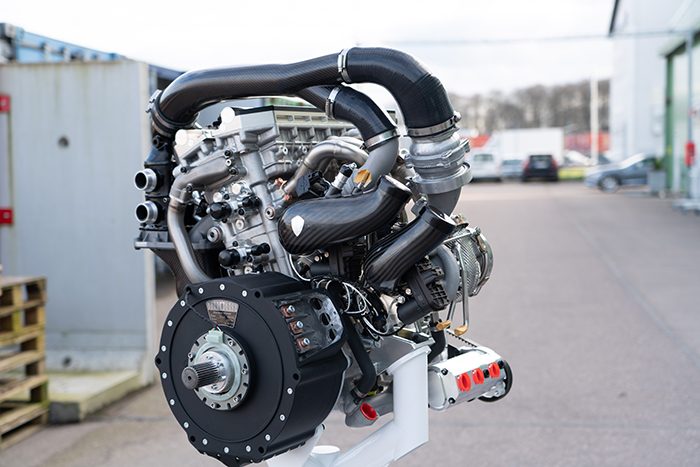
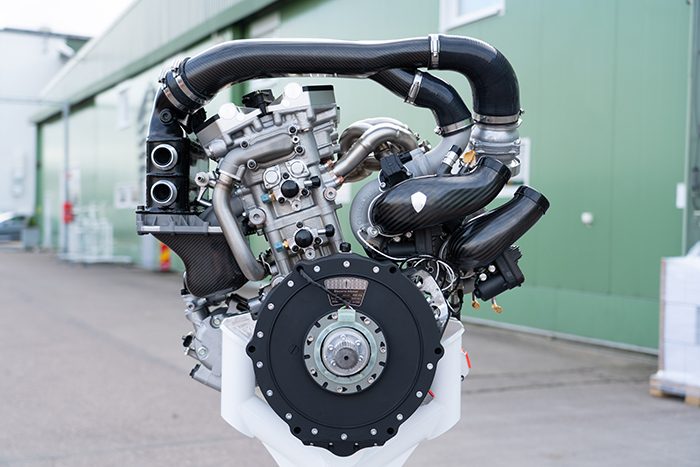
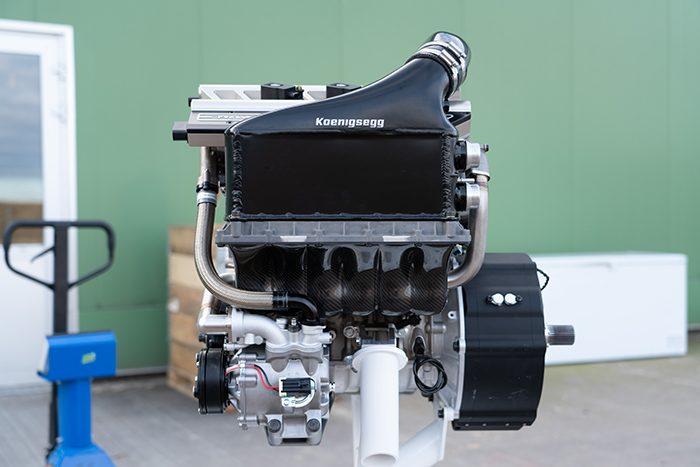
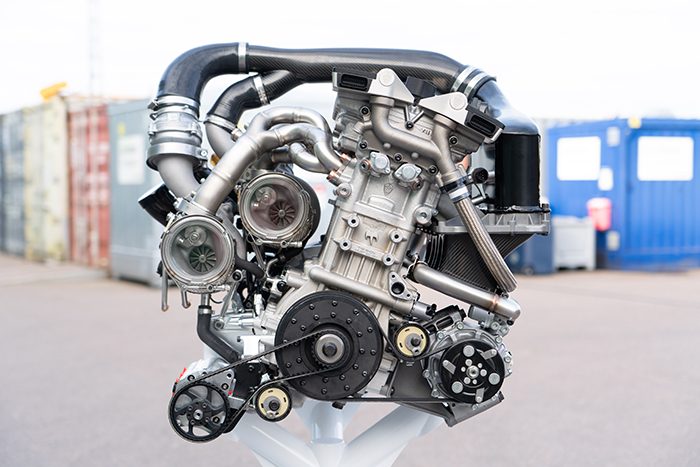

Probably not tooooo much more, at least without a change in philosophy.
Here's the paradox - the more efficient you want the engine to be, the slower you make it rev. hp/L only really matters if you've got a capacity limit (like in motorsport, F1 is set at 1.8L max) or some sort of size limit (where capacity somewhat correlates to physical unit size). And opposite to heavy industry, in motorsport and production they often run to limited displacement capacity, size, material/shipping cost and weight and the aim of targeting N power. Combine that with decades of 'small fast engines = better' marketing mindset and admittedly poor performance from large engines over a long time period, and you've got a recipe for nobody doing the right thing.
Think of it this way, you're a manufacturer and you could do 2 things:
A) 2.0L engine, 400hp, 8,000 rpm redline, 35% thermal efficiency, between-5-to-7-speed manual, 150kg.
B) 12.0L engine, 380hp, only revs between 1,000 and 1,400rpm, 50% thermal efficiency, needs a 10-speed box, 250kg.
If anyone wants to give marketing that second one a go, I'm all ears.
And no cheating by marketing it to firms with accountants, aim it at Normal People.
Because I sure as hell can't make a huge slow moving engine sound sexy to some random person on the street.
The real interesting thing is that GTSport soooort of illustrates how people do the math in the 'real world'. From memory: 'Fuel setting 2' generates 2% less power, but uses 6% less fuel. About a 4.25% improvement in thermal efficiency in converting fuel into power. 'Fuel setting 3' is about another 4% more efficient than 2.
So why doesn't everyone run on lower fuel settings? Because if you look at fuel as 'potential lap time per unit burned' and compare that to 'potential lap time per unit refilled at a pit stop per second' it works out in many (NOT ALL, or even most, but many) cases that the fuel stop is basically an instant compared to the mountain of time you lose saving fuel.
This is worth a watch for anyone not familiar with Freevalve (from 2016):
I don't think they're using the poppet valves to control turbine bypass behaviour, as the turbines clearly have internal wastegates in the pictures. So the twin setup might instead be for response and / or "staged" boost (+2 bar peak?).
The actuation is (electro-)pneumatic, so it will indeed need a pump!
Peltier device is a device that's basically a heat pump, but in solid-state (like a brick or plate). If your Fridge is a Cassette Tape a peltier device is a USB stick, but with tiny capacity.- The hot & cold cupholders run on Peltier cycle, whatever that is
- The door hinge now also moves the door upwards (instead of just out and rotating) so you can park close to a kerb and still clear it
- Fixed roof means this car has highest torsional rigidity out of any 4 seater car
I'm still a bit perplexed by the choice to have a mid engine front wheel drive layout though. Surely having a traditional MR layout and then moving the 2 electric motors to the front will still leave enough space for a frunk, and the car will be even lighter without the driveshaft and extra set of diffs at the front? Then again, I don't have CvK's brain so I'm sure they went thru that iteration already and have a good reason why they went the current route.
Interesting, thanks for the easy to understand explanation. It is definitely counterintuitive for someone without an engineering background.
With GT Sport though, it's not as straightforward as "lower fuel map = more time loss than refuelling". In the FIA races last year we have very short races and very high multipliers where it's actually more beneficial to save the fuel on track than spending ages refuelling. With the OP slipstream you don't lose as much time in draft even with a low fuel map. Whereas if you go all out in addition to the refuelling you have to battle your way back thru the pack which costs you even more time. This year they have made the races 2x longer so yes, saving fuel on track costs too much time and you're better off going all out and refuelling.
...
- Apparently the engine can also run on a 2 stroke cycle in some situations
...
2T: |o o o|o o o|o o o|o o o| 120°
4T: |o - o|- o -|o - o|- o -| 240°
8T: |o - -|- o -|- - o|- - -| 480°...
I can vaguely remember FWD being quoted as being '1MPG' better than RWD for passenger cars, but I can't figure out why. Only thing I can think of is that the loss of a longer driveshaft is offset by the links at the front being at their most efficient angle (straight ahead) during fuel testing cycles?
...
 "STAMP IT! AND LET'S GET IT IN PRODUCTION"
"STAMP IT! AND LET'S GET IT IN PRODUCTION" It could be that they wanted a weaker engine powering the fronts, and the powerful electric motors on the rear where most of the grip and load is, but had to just accept the packaging being a little weird. That way under hard acceleration they're getting something like a ~30:70 power split F:R which is ideal.
But then you've got the best generators on the rear axle which isn't ideal for regeneration under braking (rear-biased for regen = unstable, front-biased for performance = less regen).
 The Nismo GT-R LM comparisons are starting to make sense
The Nismo GT-R LM comparisons are starting to make sense 
I think this might be a mis-quote in some way, it's more likely to be rolling cylinder deactivation. If not, this is pretty awesome - but it means the peak power figure for the thermo engine might be dubious if it's only in "some situations".

Just when I thought Koenigsegg couldn't get any dumber, they go and do a thing like this....
AND TOTALLY REDEEM THEMSELVES!
Seriously...this thing is bananas, in the best possible ways. CVK is a savant. Just imagine what kind of weird and beautiful creations could emerge if him, Musk, and Pagani worked together on something....anything.


According to the website (https://www.koenigsegg.com/gemera/engine-and-drivetrain/), the ICE+crankshaft e-motor's output to the front wheels is 1100 HP and the 2 rear motors provide 500 HP each (1000 HP combined). So actually there's slightly more power going to the front.
Someone pointed out also what happens when the batteries run out of juice? You'll end up with a 600 HP FWD with no torque vectoring to helpThe Nismo GT-R LM comparisons are starting to make sense

100% agree there's a lot of New Supra in there, along with a fair old chunk of Mercedes AMG-One.Has the look of the Supra's body outline in the front 3 quarter view.
Okay, so...Koenigsegg takes care of the engineering, including electric because he seems to have a handle on that. Pagani does the design work, but keep him away from the key. That leaves Musk, who...Just imagine what kind of weird and beautiful creations could emerge if him, Musk, and Pagani worked together on something....anything.
I thought the SEC banned him from doing that?Okay, so...Koenigsegg takes care of the engineering, including electric because he seems to have a handle on that. Pagani does the design work, but keep him away from the key. That leaves Musk, who...
...
...fosters a cult-like fanbase?
A bike.When's the Etcetera coming out?
...
...
And what'll it be?
It promises full spool from 1700 rpm and peak torque from 2000 rpm.A smallish engine geared for 200+mph is gonna be laggy as hell
It's a bummer they couldn't make it pretty.
I think the rear electric/front petrol arrangement was for handling and traction. A smallish engine geared for 200+mph is gonna be laggy as hell, so below like 70mph most of the available thrust comes from the electric motors. Surely at normal speeds a RWD bias is preferable.
As for a mid/rear engine, setup in a 4-seater? packaging.
It's a bummer they couldn't make it pretty. The last time they designed a car was in the 90s, since then it's been a parade of aero kits.
Will the Freevalve system ever see use in regular cars? Or will it always be reserved for ultra-expensive hypercars?
When the Koenigsegg Gemera debuted in March 2020, the Swedish brand announced a twin-turbocharged 2.0-liter three-cylinder engine with three electric motors developing a combined 1,700 horsepower and 2,581 pound-feet of torque. The company held back a secret, though. The automaker announced a twin-turbo 5.0-liter V8 as a second engine option while opening a factory expansion.
The V8 increases the Gemera's output to 2,300 horsepower and 2,028 pound-feet (2,750 Newton-meters) of torque when burning E85 fuel. Upgrading to the bigger engine over the three-cylinder mill adds $400,000 to the four-seat supercar's price. The eight-cylinder powerplant hooks up to Koenigsegg's nine-speed Light Speed Transmission.
The second engine option isn't the only change for the Gemera. Koenigsegg now installs traditional side mirrors rather than the cameras on the original show car. The change is because the cameras are not yet legal in all markets, like in the United States.
The Gemera also gets an optional Ghost Package. It adds an extended front splitter, S-duct, rear wing, and more aero tweaks. The modifications to the nose mean there is no longer storage space beneath the hood.
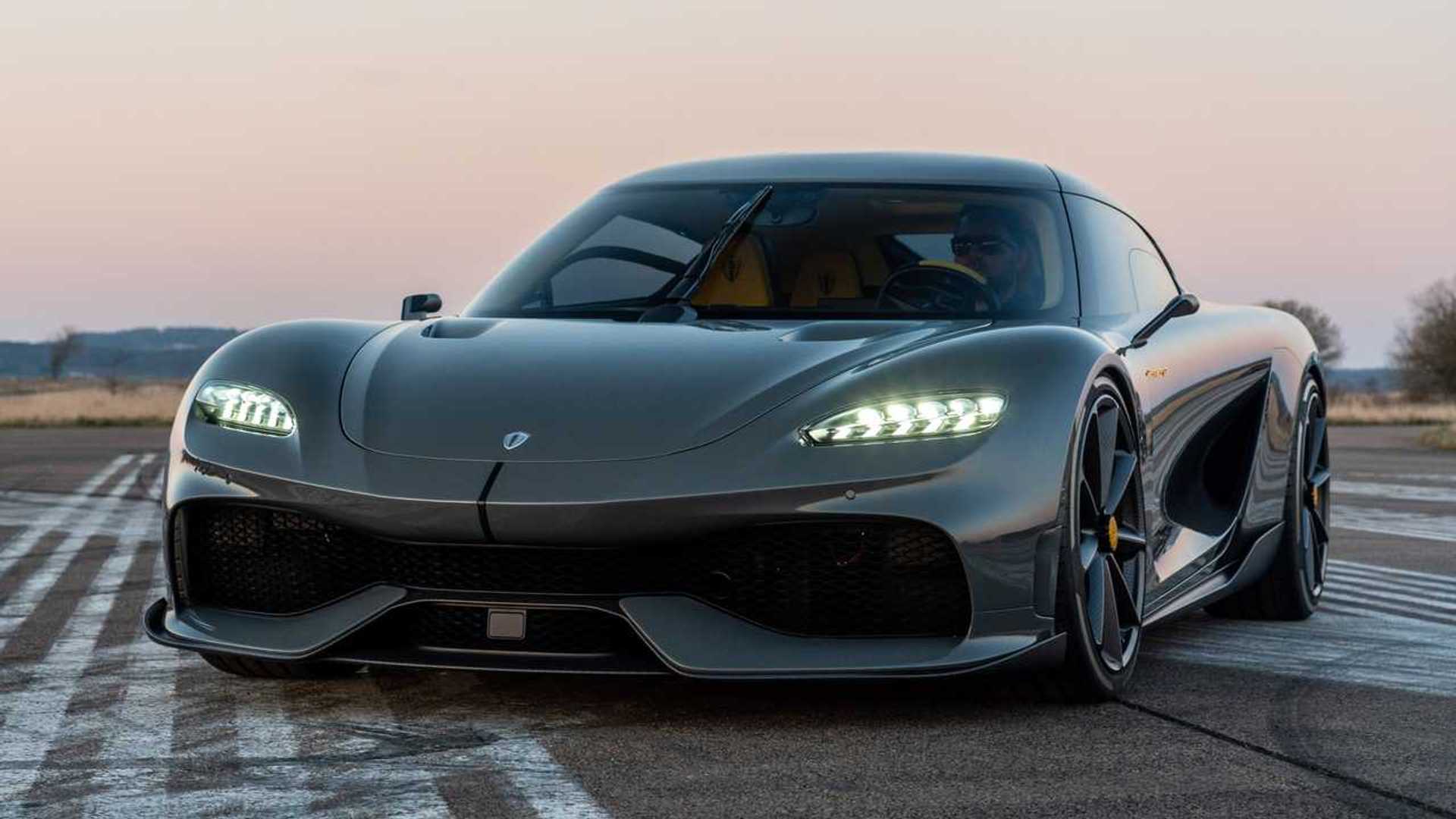
It's insane and irrational but there are plenty of people who are insane and irrational. I fly people all the time who think it makes more sense to spend $10,000 on a flight from New York to Boston rather than a $500 limo for a four drive.An additional $400,000 for the V8 drivetrain is wild, personally.

Initially, the plans were to incorporate the Koenigsegg Direct Drive system into the Gemera, as showcased in the 2020 Gemera show car and featured in the first running prototypes. This ingenious and unique solution, successfully implemented in the Regera program, offered a perfect blend of efficiency, power, and drivability.
However, during the development process, the Light Speed Transmission (LST) was introduced in the acclaimed Jesko, which delivers unparalleled excitement and performance. Its ability to remove the flywheel and clutch from the engine elevates driver engagement and exhilaration to unprecedented levels.
“We could not resist exploring the possibility of incorporating these remarkable features and benefits into the Gemera production model, leading us down an exciting new development path — the Light Speed Tourbillon Transmission (LSTT),” explains Christian.
To complement the engine and the LSTT, the R&D team has also developed the "Dark Matter" E-motor – an 800 hp, 1250 Nm patent-pending Raxial Flux E-motor that is an evolutionary leap in electric propulsion, representing the world's most powerful automotive-grade E-motor with 6-phase technology. One Dark Matter is now paired with the LSTT, instead of 3 Quarks E-motors with the Direct Drive system. This makes the drivetrain lighter, smaller, and even more engaging. The LSTT four-wheel drive system with four-wheel torque vectoring can be powered by either the 800 hp Dark Matter E-motor or the twin-turbo TFG, or a combination of the two, resulting in a maximum output of 1400 hp and 1850 Nm.
Thanks to its new lighter electric propulsion system and optimized use of the TFG's rev range with the LSTT, the Gemera's acceleration and performance have been significantly improved compared to the previous version which was already extremely well-performing and fast.
The Client Specification Gemera not only retains its inherent qualities but also adds the lightness and responsiveness LST in the form of the LSTT. “We added 'Tourbillon' to the name of the LST, as this mechanism represents the automotive equivalent of a high-end Swiss watch and is simply beautiful,” explains Christian von Koenigsegg.
Designing a transmission that accommodates four seats, a mid-engine position, electric propulsion, and still manages to provide nine gears, torque vectoring, and four-wheel drive at a lower weight than ever seen before required immense creativity and innovation.
In the spring of 2020, the world witnessed the introduction of the remarkable Koenigsegg Gemera concept. Now, Koenigsegg unveils the Client Specification Gemera and its birthplace, the Gripen Atelier, at the Koenigsegg Campus in Ängelholm, Sweden.
Even so, we have yet another thrilling announcement—the Koenigsegg Gemera HV8 (Hot V8) version. The HV8 elevates the Gemera beyond any Hypercar or Megacar and takes everything to the next level. Before we came up with the LSTT, it was impossible to believe we could fit a mid-engined V8 configuration in the Gemera, given the large occupant space in comparison to the compact size of the Gemera.
However, the layout of the LSTT allowed us to do it. To make it happen, we had to convert the Jesko V8 into a so-called Hot V8 where the exhaust exits at the top center, but otherwise, it is very similar to the Jesko engine.
Combining the magnificent sound, responsiveness, and power of the Jesko V8 with the daring engineering of the Gemera truly creates a new breed.
With this new engine configuration, the Gemera boasts an astounding 1500 hp from the HV8 in addition to the 800 hp provided by the Dark Matter E-motor, resulting in a total of 2,300 hp and 2,750 Nm of torque – a new world record for a production car.
"The Gemera HV8 is not only the most powerful and extreme production car on the planet Earth, with an astonishing 1,11 hp per kg, but it is also the most practical and user-friendly sports car ever created. Its incredible response, handling, engine sound, crisp transmission, spacious interior, and four-wheel-drive systems combine to create an unprecedented and unparalleled driving experience, ready to set numerous records of performance around tracks and in straight lines. We are extremely proud to have brought the Gemera HV8 to life and very much look forward to delivering this new level of performance and technology to our esteemed clients and fans," says Christian.
The Gemera will start production in the Gripen Atelier at the end of 2024, with customer deliveries in the first part of 2025.